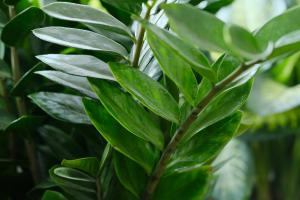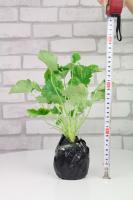Is LED Lights Good for Growing Plants?
With the increasing popularity of indoor gardening, there has been a surge in the demand for artificial lighting systems that can support plant growth. One technology that has emerged as a popular choice is LED lights. But the question is, are LED lights good for growing plants? In this article, we will explore the benefits and drawbacks of using LED lights for grow room lighting.
Advantages of Using LED Lights for Growing Plants
There are several benefits of using LED lights for growing plants. Firstly, LED lights are highly energy-efficient compared to traditional lighting systems. They consume significantly less power and emit much lower amounts of heat, which makes them a great choice for indoor gardening. Secondly, LED lights are versatile and can be customized to deliver light in specific wavelengths that are optimal for plant growth. They can provide the right spectrum of light, ranging from blue and green to red and yellow, which helps stimulate different stages of plant development.
Another advantage of using LED lights for indoor gardening is that they have a longer lifespan compared to other traditional lighting systems. They can last up to 20 years, making them a more cost-effective solution in the long run. Finally, LED lights are lightweight and small in size, making them easy to install and maneuver around the grow room.
Disadvantages of Using LED Lights for Growing Plants
One of the drawbacks of using LED lights for growing plants is the initial cost. LED lights are relatively more expensive than other lighting systems, which can be a barrier for beginners or hobby growers. Additionally, while LED lights are highly versatile, they can be less effective in delivering the full spectrum of light necessary for certain plants or crops.
Another disadvantage is the need for proper plant positioning. LED lights have a narrow beam angle when compared to other lighting systems, which means they need to be positioned correctly to avoid uneven lighting and shadowing. Moreover, LED lights can cause photoinhibition in certain plants, limiting their growth when exposed to high light intensities.
The Verdict
Overall, LED lights offer several advantages for indoor gardening, such as energy efficiency, customizable light delivery, and a longer lifespan. However, they can be expensive and may require proper positioning and careful use to optimize plant growth. As a result, it's important to evaluate your specific plant’s needs and grow room conditions before deciding on an LED lighting system.
Ultimately, the decision of whether LED lights are good for growing plants depends on your specific gardening needs, budget, and goals. By weighing the advantages and drawbacks, you can make an informed decision based on your unique circumstances.

 how many times do yo...
how many times do yo... how many planted tre...
how many planted tre... how many pine trees ...
how many pine trees ... how many pecan trees...
how many pecan trees... how many plants comp...
how many plants comp... how many plants can ...
how many plants can ... how many plants and ...
how many plants and ... how many pepper plan...
how many pepper plan...































